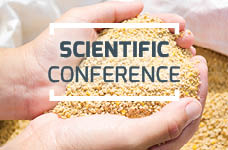At APPC (Asian Pacific Poultry Conference) held in Nanjing, China from 31st October to 4th November 2023, Tahir Mahmood (Adisseo) in the frame of the Poultry Nutrition and Health Forum gave a talk about low protein diets.
You have below the abstract of this oral communication:
The necessity to develop low protein (LP) diets for poultry is driven mainly by environmental and economic compulsions. However, successful development of such diets must be thought beyond crystalline amino acids supply with a multipronged approach.
Decreasing oilseed meals in LP diets results invariably in high cereal and unbound amino acids levels This, in turn, increases the rapidly digestible starch leading to an increased net energy to AA ratio and to higher fat deposition. Thus, the rate of starch digestion might be of importance and slowly digestible starch source(s) may be useful to limit the excess energy. In LP diets, a reduction in SBM limits other critical nutrients such as glycine (Gly) and potassium (K). The breeding companies have no clear guideline on Gly and recommend a rather wide range of 0.6-0.9% for K showing a lack of clarity on these nutrients especially in LP diets. Also, higher inclusion of non-bound AAs such as methionine (Met) would change the Met to sulphur AA ratio in LP diets.
Collectively, these changes in LP diets can impact growth performance and gut health of poultry. We found that decreasing protein in birds diets resulted in increased measured Apparent Metabolizable Energy (AME) (20 Kcal/CP point) despite iso-AME formulated diets. This AME increase was validated in a subsequent study in conventional corn-Soybean meal LP diet, but AME and starch digestibility was significantly lower when using a pea- based LP diet allowing better FCR (P< 0.05).
Furthermore, cholesterol and triglycerides levels were higher (P<0.05), short chain fatty acids production was increased in peas-based LP diets (P<0.05) which could be linked with improved gut resilience. For Gly, a positive response on FCR was observed at a maximum level of 1.65% Gly+Ser showing that these non- essential AA might be maintained at significant level. The widening Met/ TSAA ratio in the LP diet was not found to be significant factor controlling the performance in LP diets just like K which did not impact growth performance from 0.70-0.84% during 10-24 d in the LP diets.
Taken together, there is an absolute need to revisit the nutrient requirements of birds in LP diets, however, we consider that LP diets would provide opportunity to include indigenous raw materials reinforcing sustainability and cost-effectiveness.

